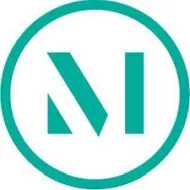- with readers working within the Insurance industries
Rejecting the maxim that anticipation is the epitome of obviousness, the U.S. Court of Appeals for the Federal Circuit held that a non-obvious invention may nonetheless be anticipated. Cohesive Technologies, Inc. v. Waters Corporation, Case Nos. 08-1029, -1030, -1031, -1059 (Fed. Cir., Oct. 7, 2008) (Linn, J.; Mayer, J., dissenting).
The district court held a 16-day jury trial on the issue of infringement of Cohesive Technologies' patent-in-suit. In defense, Waters presented evidence that the claims were anticipated by seven separate references and obvious over each reference independently and in various combinations. The district court did not submit the issue of anticipation to the jury because it believed that anticipation is a subset of obviousness. Instead, the district court sua sponte entered a directed verdict that the patent claims were not anticipated. The jury found that the patent claims were not obvious and were infringed.
On appeal, a majority panel of the Federal Circuit clarified that novelty and non-obviousness are separate patentability requirements that represent separate defenses to patent infringement. The Court commented that a reference that anticipates a claim usually renders the claim obvious but that the tests for anticipation and obviousness are different. Thus, "it is not necessary true that a verdict of nonobviousness forecloses anticipation." The Court explained that the test for obviousness requires consideration of secondary considerations of non-obviousness, which are not relevant to the issue of anticipation. The Court also explained that "anticipation can be proven inherently, but proof of inherent anticipation is not the same as proof of obviousness."
The Court illustrated these points with an example involving a claim drawn to a particular metal alloy. In the example, the existence of secondary considerations indicated that the invention is non-obvious. "Nevertheless, there may be a centuries-old alchemy textbook that, while not describing any metal alloys, describes a method that, if practiced precisely, actually produces the claimed alloy. While the prior art alchemy textbook inherently anticipates the claim under § 102, the claim may not be said to be obvious under § 103."
Judge Mayer dissented, stating that the majority's view that a claim can be non-obvious yet anticipated "flies in the face of a long line of precedent to the contrary." In Judge Mayer's view, "precedent makes clear that every anticipated claim is obvious, it follows that if a claim is not obvious, it cannot be anticipated."
Practice Note: The decision clarifies that the anticipation defense is available alleged infringers even when the claims are not obvious. The anticipation defense might be particularly valuable when lack of obviousness is based on secondary considerations, or when an anticipating inherent disclosure was not previously appreciated.
The content of this article is intended to provide a general guide to the subject matter. Specialist advice should be sought about your specific circumstances.


